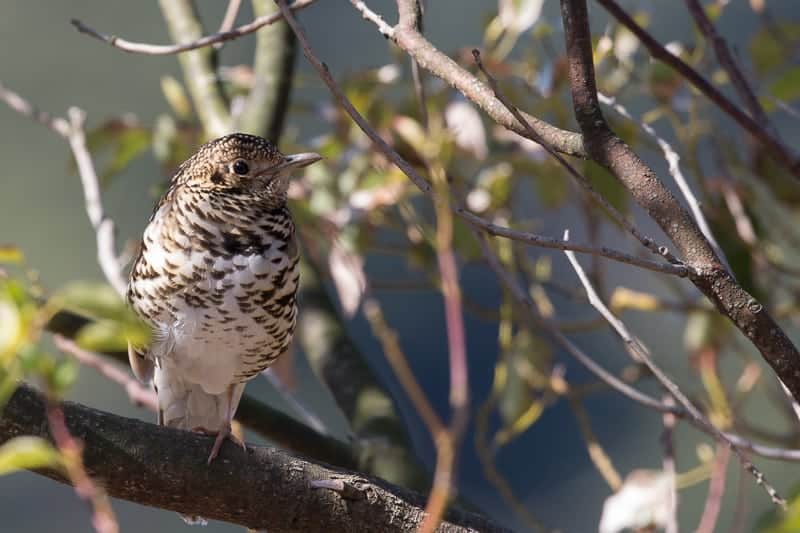I haven’t been doing much photography since returning from the Kagoshima & East Hokkaido tour, but this morning’s weather report looked great and I’d heard reports of a White’s Thrush at Kawahara Lake. So I thought I’d take the chance to photograph it.
The taxonomy of Zoothera dauma (Scaly Thrush) has been disputed for a long time, and slowly subspecies are being recognized as full species. Australian Bassian and Russet-tailed Thrushes used to be included in Z. dauma, but were separated some time ago.
Similarly there is a recent trend to split Z. dauma further along geographic lines, and the IOC, Clements and Howard & Moore now acceptZ. aurea as a full species. There are two subspecies described, but both appear identical in the field. Z. a. aurea generally applies to to birds breeding from Siberia to Korea, while Z. a. toratugumi applies to birds breeding in central and northern Japan.
In Manchuria, there is an overlap of the two subspecies. Both subspecies are migratory, although Z. a. toratugumi seems not to go too far south, venturing to the Ryukyu islands and Taiwan, while the nominate race will travel all the way to Vietnam.
This presents identification problems particularly in the Amami Islands, with the almost identical Amami Thrush easily confused from late autumn to early spring (so go to Amami in summer if you want to make sure you’ve seen Z. major!)
In my area of Japan, White’s Thrush are mostly passage migrants, passing through in early spring and again in late autumn, although some may winter (some could also be resident….breeding in the mountains in central Kyushu and then moving to lower elevations in winter). In this region, all birds should be Z. a. toratugumi, although nearby islands in the Sea of Japan such as Tsushima could theoretically have both subspecies passing through and therefore Z. a. aurea could be blown across. “Toratugumi” means “Tiger Thrush” in Japanese…

John Wright
John Wright is an Australian wildlife photographer and bird guide based in Kyushu, Japan. John became seriously engaged in nature photography while living in Japan and then Thailand. He returned to Japan in 2008 and has since concentrated on wildlife photography, especially birds. John visits Southeast Asia and Australia regularly, but usually travels within the Japanese archipelago, where he also guides visiting birders and wildlife photography enthusiasts.
Leave a Reply